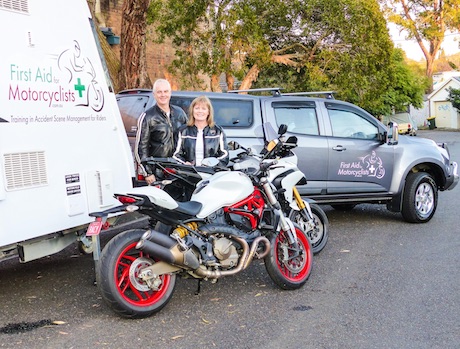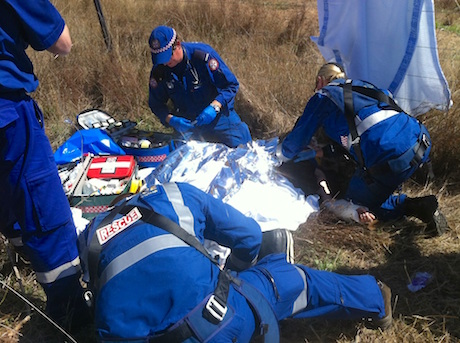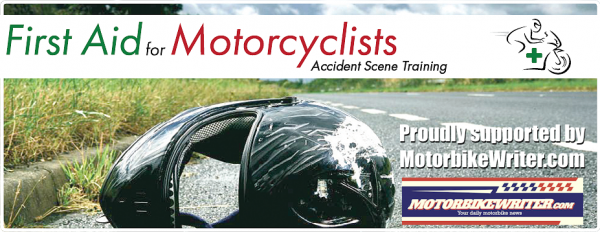First Aid For Motorcyclists course organisers say they are often asked whether it is ok for a first-aider to give a crashed rider some water or even something to eat.
Their advice has been “best not to” because often a casualty will end up requiring surgery and this may interfere with the anaesthesiology.
Anaesthetic/recovery nurse Jeni Carter, who attended a recent Sydney FAFM course explains why you should only provide the tiniest of sips if a casualty pleads for water.
“The purpose of acid in the stomach is to break down food. If you’ve just eaten and then require an anaesthetic, you could possibly regurgitate (vomit) that food and it could come up the ‘food’ pipe and down the ‘wind’ pipe and end up in your lungs,” she says.
“Acid in the lungs can cause aspiration pneumonia which can lead to death.”
The FAFM course, designed by highly qualified and experienced first aiders Tracy Hughes and partner Roger Fance, is currently touring around the nation to reach riders who couldn’t attend their popular Sydney courses.

Their course points out that knowing when the patient last ate can help and that when the body goes into shock in a crash, one of the things that shuts down is digestion.
“So in a major trauma where the body is shunting blood to the brain, heart and lungs and putting its energy into keeping those organs going, then food will just sit in the stomach for a while,” says Jeni.
“There is currently lots of discussion going on about timing regarding fasting times prior to surgery. We used to tell patients on a morning list that they had to fast from midnight. No food or water.
“Now we say no food from midnight but they can have clear fluids up to two hours prior to admission. It depends on the anaesthetist.”
Jeni says that even sucking lollies and chewing gum gives the stomach a signal that food is on the way just by the mechanics of chewing and creating saliva. That is why the stomach fills with acid getting ready to break down the food.
“It has been put to me before ‘but what if I’ve just been to Macca’s and then have an accident?’ Then we treat your airway differently,” she says.
“We would definitely tube the patient if going for surgery but as we put the tube in, the anaesthetic nurse would apply pressure to the throat area to minimise the chance of regurgitation until the tube is in place and the cuff on the tube is blown up.
“Of course people are going to eat while they’re out and that’s why we have different ways of dealing with different situations”.
Jeni described the FAFM course as “fantastic”.
“Best first-aid course I’ve ever done and I’ve been doing them for over 40 years.”



